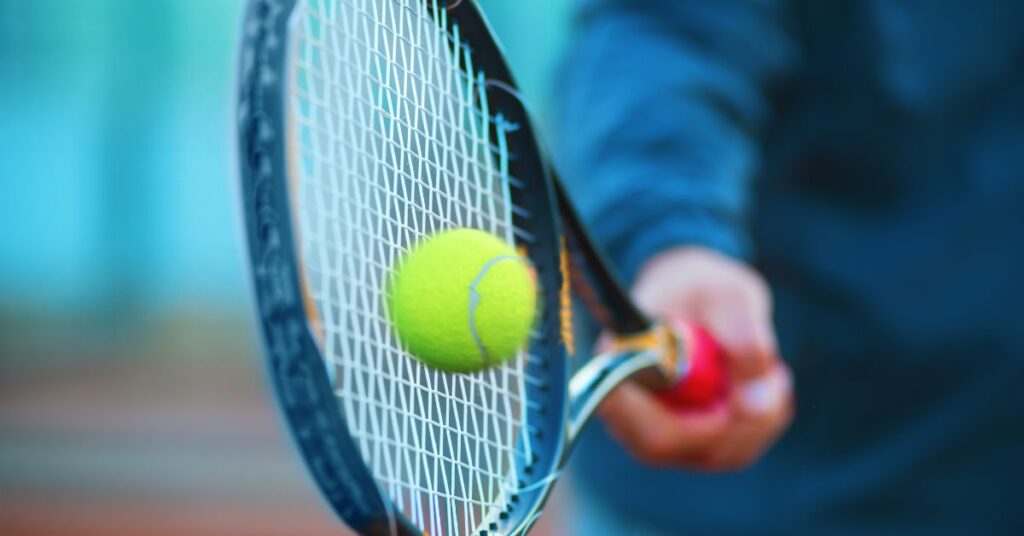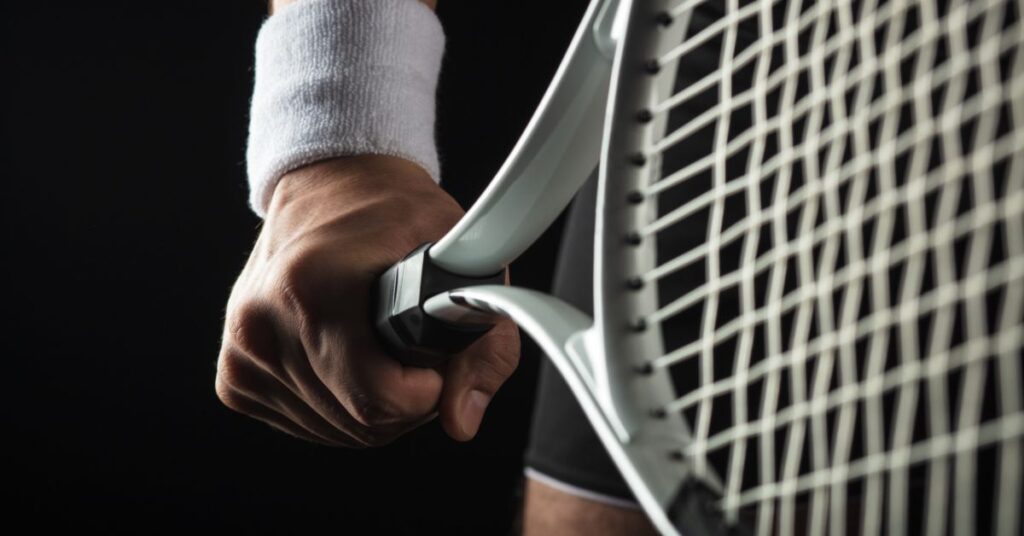If you’re new to tennis, you might be wondering how to hold a tennis racquet properly. When I first started playing, I realized that the right tennis racket grip can make all the difference in my game. Whether you’re learning how to hold a tennis racket for beginners, mastering the forehand stroke, or figuring out how to regrip a tennis racket, getting your hand placement right is key.
Table of Contents for How to Hold a Tennis Racquet
Finding the Right Tennis Grip
Choosing the right grip is essential for control, power, and spin in your game. If you’re wondering how to hold a tennis racquet, understanding different grip techniques can improve your performance. From the Continental Grip for serves to the Eastern or Western grips for groundstrokes, mastering the right grip is key to success on the court.
1. The Continental Grip
This is a versatile tennis racquet grip that works well for serves, volleys, and backhands. To use this grip, place the base knuckle of your index finger on the second bevel of the racket handle and wrap your fingers around it. This grip allows for control but isn’t the best for spin.
2. The Eastern Forehand Grip
When I first learned how to hold a racket for forehand, I started with this grip. Place your hand on the racket handle as if you’re shaking hands with it. Your index knuckle should rest on the third bevel. This grip is great for beginners because it’s simple and allows for a natural swing.
3. The Semi-Western Grip
If you want more spin on your forehand, the semi-Western grip is a great choice. I found this useful when learning how to grip a tennis racquet for powerful groundstrokes. To get into this grip, move your hand so that the index knuckle is on the fourth bevel. This position allows for more topspin, making the ball dip down quickly after crossing the net.
4. The Western Grip
Advanced players who love extreme topspin use this grip. While learning how to hold a racket properly, I struggled with this grip because it made hitting low balls tricky. To find it, place your index knuckle on the fifth bevel of the racket handle.
Mastering the Backhand Grip
Mastering the right backhand grip is essential for improving your tennis game. Understanding tennis grip pro tip strengths helps you choose the best grip for stability, control, and power.
Whether you’re using a one-handed or two-handed backhand, each grip has its grip pro tip strengths weaknesses, affecting spin, precision, and comfort. Let’s break down the key techniques to enhance your backhand performance.
1. Eastern Backhand Grip
For a solid one-handed backhand, I use the Eastern backhand grip. Place the base knuckle of your index finger on the first bevel. This backhand tennis grip pro technique offers stability and control but isn’t ideal for heavy topspin. Mastering this grip helps improve precision and consistency in backhand shots.
2. Two-Handed Backhand Grip
If you prefer a two-handed backhand, place your dominant hand in a Continental Grip and your non-dominant hand in an Eastern forehand grip. This combination provides play balance and power. While this grip is commonly used, some players experiment with the western forehand grip for added spin and control in their overall game.
Holding the Racquet for a Serve
Mastering the right grip is crucial for a powerful and controlled serve. When learning how to hold a tennis racquet for a serve, understanding the forehand grip bevel can make a big difference. The Continental Grip is the ideal choice, helping you generate spin and precision.
While focusing on serving techniques, many players also ask, “What is the proper grip for a tennis forehand?” Finding the right forehand grip enhances control, power, and consistency in your overall game. Let’s explore why the Continental Grip works best for serves and how grip choices impact your performance.
How to Regrip a Tennis Racket
Over time, your tennis racket grip will wear out. I often wondered, “Do you put overgrip over the original grip?” The answer is yes! To replace or add an overgrip, start at the base of the handle and wrap the new grip tightly around, overlapping slightly. This ensures better comfort and control.
More About How to Hold a Tennis Racquet and Tennis Grips
What Is the Correct Grip on a Tennis Racquet?
From my experience, the Eastern or semi-Western grip works best for forehands. If you’re wondering how to hold a tennis racquet, I’d recommend trying both to see which feels more natural for your swing.
What Grip Should a Beginner Use for Tennis Racquets?
When I first started playing, I found the Eastern grip easiest to learn. It’s a beginner-friendly grip where your index knuckle is on the third bevel. If you’re still figuring out how to hold a tennis racquet, this is a great place to start.
What Is the Right Way to Hold a Tennis Racket?
I’ve learned that your hand placement should match your stroke type—whether it’s forehand, backhand, or serve. If you’re unsure how to hold a tennis racquet, experimenting with different grips will help you find what works best.
Best Grip for Tennis Racquet?
The best grip really depends on your style of play. When I was a beginner, I preferred the Eastern grip, but as I improved, the semi-Western grip gave me more spin and control. If you’re figuring out how to hold a tennis racquet, start with a basic grip and adjust as you develop your technique.
Mastering how to grip a tennis racket is essential for improving your play. Now that you understand how to hold tennis racquet right hand and how to switch grips for different shots, you’re ready to hit the court with confidence! Whether you’re practicing how to a racket backhand or working on your serve, the right grip will help you become a better player.









